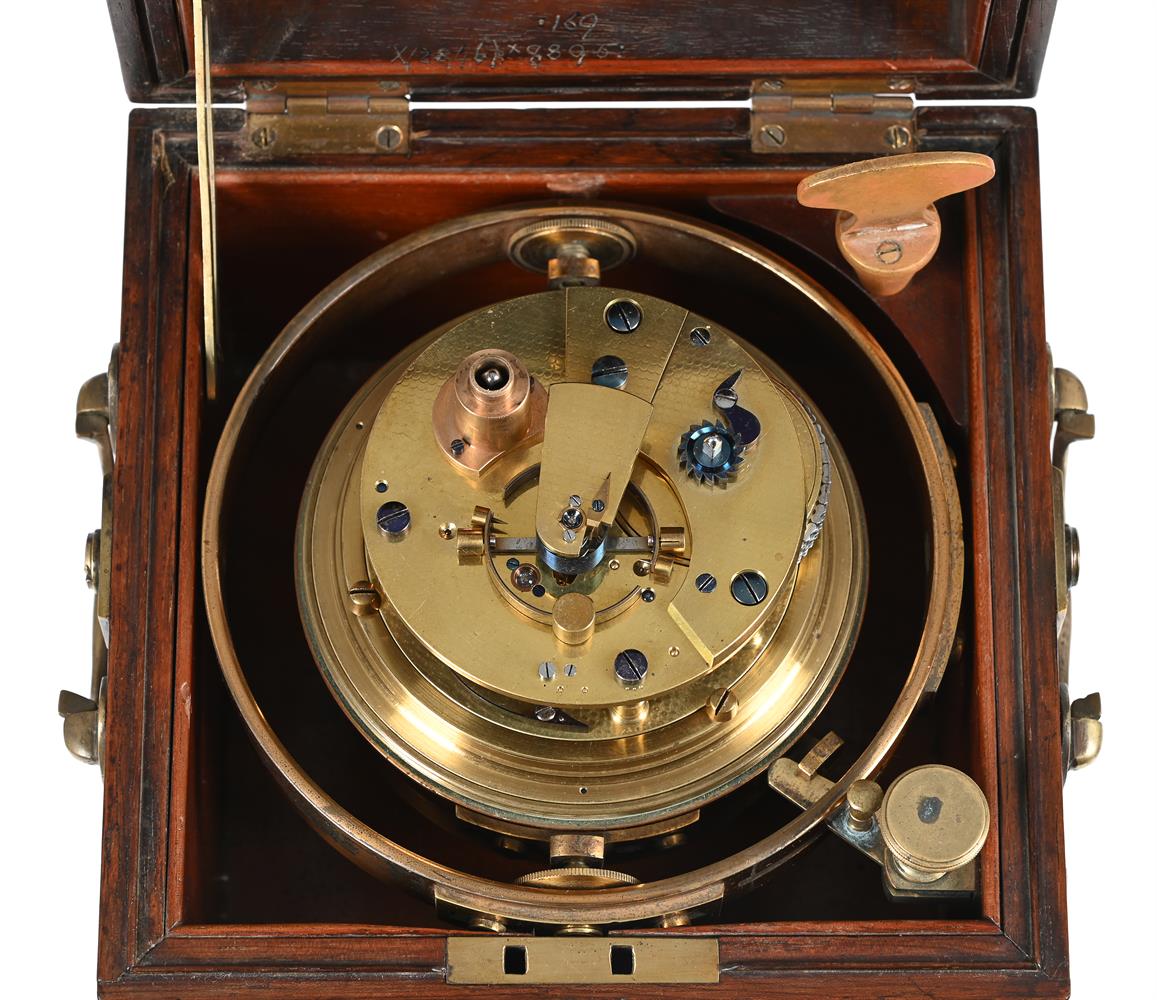A Victorian rosewood cased sympiesometer Crichton Brothers, London, circa 1875 The rectangular silvered scale applied with siphon tube with open bulb to the left and sealed bulb to the right filled with pink stained fluid, the left hand margin with mercury tube Fahrenheit scale thermometer above engraved signature Crichton Bro's., 11 Billiter St. London, opposing right hand side with engraved vertical scale for degrees Fahrenheit ranging between 20 and 120 set behind slide with expanded scale annotated for barometric inches and with the usual weather observations, the upper edge of the slide fitted with angled brass pointer for calibration against the temperature scale behind and with adjustment by rack and pinion to a knurled brass knob fitted to the right hand side of the case, the lower edge with recessed circular level recording disc labelled REGISTER and engraved with barometric scale visible through an arched aperture in the plate and manually adjusted via projecting rim to the base, the case with shaped upstand to the cavetto moulded cornice above moulded surround to the bevel glazed front aperture, (with restoration), 55cm (21.75ins) high. Crichton Brothers are recorded in Banfield, Edwin BAROMETER MAKERS AND RETAILERS 1660-1900 as specialist makers of sympiesometers working from 11 Billiter Street, London, 1871-7. The sympiesometer was invented by Alexander Adie of Edinburgh in 1818 and is essentially an improved version of Robert Hooke's thermobarometer which was subject of a paper presented to the Royal Society in 1668. The instrument works by having a syphon tube filled with liquid open to the air at one end and with trapped gas at the other (sulphuric acid and hydrogen were used in later sympiesometers). As barometric pressure increases the liquid will be forced down the tube causing the gas to be compressed, resulting in a change in level in the tube. Unfortunately the volume of the gas changes with temperature so before a reliable reading can be taken the instrument would first need to be calibrated by adjusting the position of the movable barometer scale in relation to the temperature scale behind to reflect the reading provided by the thermometer. The sympiesometer was conceived as an alternative to the mercury marine barometer as it was smaller and believed to be less susceptible to the motion of a vessel at sea. Condition report disclaimer
A Victorian rosewood cased sympiesometer Crichton Brothers, London, circa 1875 The rectangular silvered scale applied with siphon tube with open bulb to the left and sealed bulb to the right filled with pink stained fluid, the left hand margin with mercury tube Fahrenheit scale thermometer above engraved signature Crichton Bro's., 11 Billiter St. London, opposing right hand side with engraved vertical scale for degrees Fahrenheit ranging between 20 and 120 set behind slide with expanded scale annotated for barometric inches and with the usual weather observations, the upper edge of the slide fitted with angled brass pointer for calibration against the temperature scale behind and with adjustment by rack and pinion to a knurled brass knob fitted to the right hand side of the case, the lower edge with recessed circular level recording disc labelled REGISTER and engraved with barometric scale visible through an arched aperture in the plate and manually adjusted via projecting rim to the base, the case with shaped upstand to the cavetto moulded cornice above moulded surround to the bevel glazed front aperture, (with restoration), 55cm (21.75ins) high. Crichton Brothers are recorded in Banfield, Edwin BAROMETER MAKERS AND RETAILERS 1660-1900 as specialist makers of sympiesometers working from 11 Billiter Street, London, 1871-7. The sympiesometer was invented by Alexander Adie of Edinburgh in 1818 and is essentially an improved version of Robert Hooke's thermobarometer which was subject of a paper presented to the Royal Society in 1668. The instrument works by having a syphon tube filled with liquid open to the air at one end and with trapped gas at the other (sulphuric acid and hydrogen were used in later sympiesometers). As barometric pressure increases the liquid will be forced down the tube causing the gas to be compressed, resulting in a change in level in the tube. Unfortunately the volume of the gas changes with temperature so before a reliable reading can be taken the instrument would first need to be calibrated by adjusting the position of the movable barometer scale in relation to the temperature scale behind to reflect the reading provided by the thermometer. The sympiesometer was conceived as an alternative to the mercury marine barometer as it was smaller and believed to be less susceptible to the motion of a vessel at sea. Condition report disclaimer















Try LotSearch and its premium features for 7 days - without any costs!
Be notified automatically about new items in upcoming auctions.
Create an alert